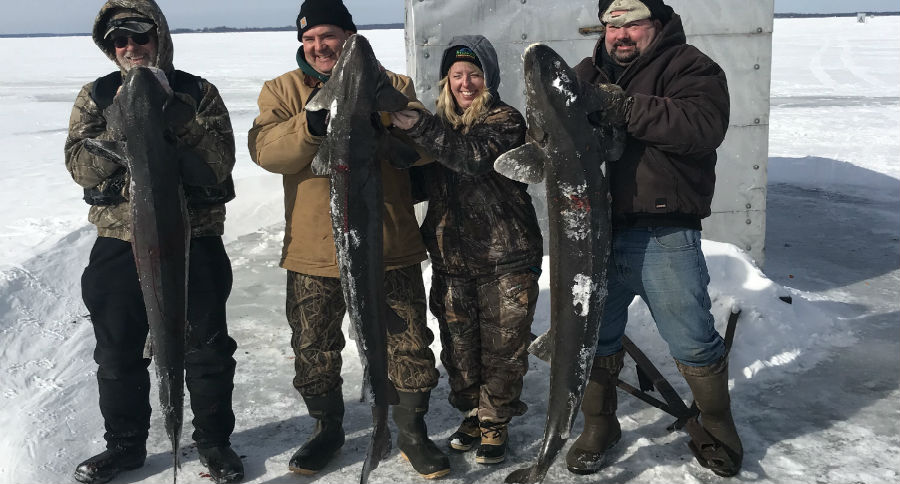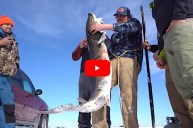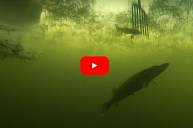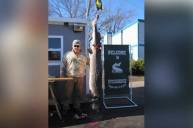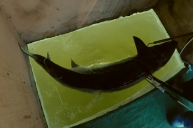My daughter and I made our annual trip to Lake Winnebago for the sturgeon spearing season. Here's what we experienced.
For two weeks every February, when Wisconsin's Lake Winnebago is frozen over, the state conducts its annual sturgeon spearing season. It's an important cultural event, revered and anticipated with as much excitement and planning as the state's vaunted whitetail deer season.
The sturgeon spearing season runs for 16 days or until any pre-set harvest caps determined by the DNR are met, whichever comes first. This year the season opened Feb. 9 and ran until Feb. 24 on Lake Winnebago.
But the "Lake Winnebago system" also includes the Upriver Lakes of Lakes Butte des Morts, Winneconne and Poygan. This year the season on those lakes closed on Feb. 18 because they had reached the harvest cap "90 percent trigger" for number of adult female fish registered.
The Wisconsin Department of Natural Resources closely monitors the sturgeon population, setting individual harvest caps on juvenile females, adult females and male lake sturgeon. When registered fish get within 90 percent of the cap, the season ends.
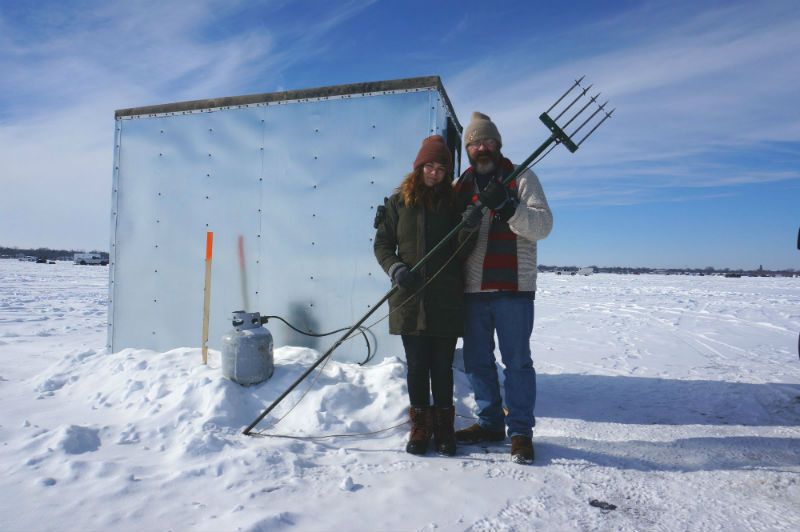
Dear sturgeon diary...
But my purpose in writing this isn't to give a history of Winnebago system sturgeon or to explain how the Wisconsin DNR sets up and monitors the season every year. We'll discuss those things in another article. I simply want to give you a look into our experience with sturgeon spearing on the lake.
My daughter, Cheyenne, and I made our third attempt at going for a sturgeon on the ice in four years. In 2017, our trip was called off because the unusually warm weather had caused the lake ice to become unstable and dangerous. But we've been on the lake for three years now: 2016, 2018 and 2019.
Thus far we're 0-for-3 (0-for-4 if you count 2017). We have yet to bring a sturgeon to the top of the ice. Although this year we came closer than we ever have before.
It's not uncommon for spearers to go for years without even seeing one of the prehistoric fish. On the other hand, some have cut their hole in the ice and speared a fish inside of 20 minutes of setting up. It's truly a game of chance.
Spearing versus ice fishing
Every year I share photos online of our weekend on the lake. We get a few questions from folks who are unfamiliar with Wisconsin sturgeon spearing. Most every outdoorsman and woman knows what ice fishing entails, but just about the only thing spearing fish through the ice has in common with ice fishing is the ice itself.
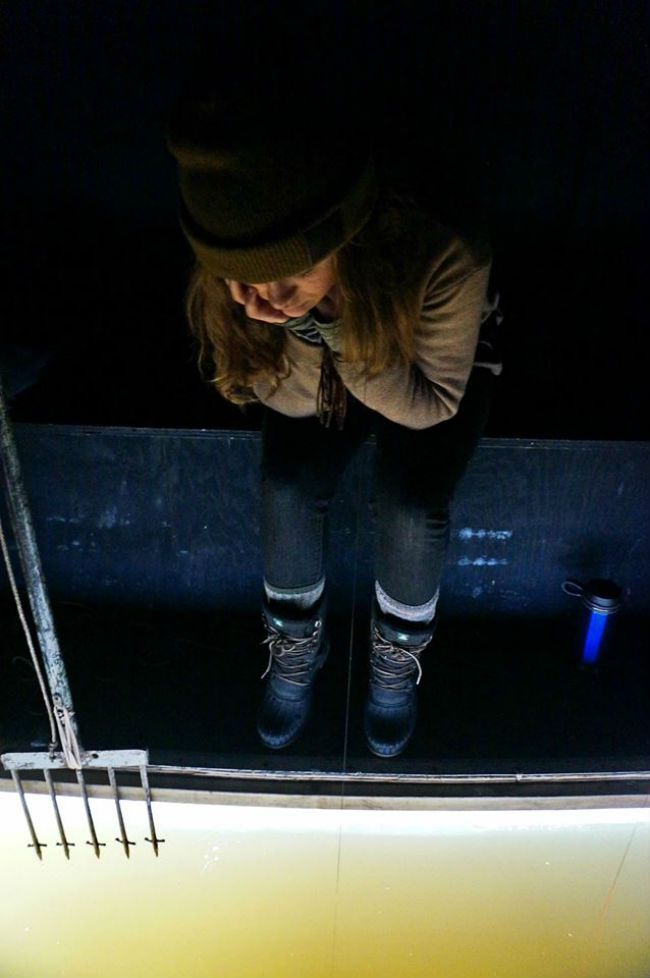
Ice fishermen generally drill small holes 8-10 inches wide in the ice and use small rods and reels to jig for fish. It's similar to what warm-weather anglers do on soft water using larger rods and reels. Or, an ice angler will set up tip-ups or tip-downs. These are contraptions with spring-loaded flags to signal when a fish has taken the bait.
Spearers, on the other hand, sit over a much larger rectangular hole in a tiny house called an ice shanty, an ice shack or a darkhouse. The small shacks are painted black on the inside, so the only light coming into the shelter emanates from the hole in the ice. This tactic prevents fish from seeing an angler's silhouette.
Spearing anglers use decoys or other artificial attractants to try to lure the fish to the hole. A long, heavy, multi-tined spear is suspended over the hole, waiting to be removed from its overhead hook and thrust into the back of an unsuspecting finned beast. It's a waiting and staring game.
Darkhouse spearing, as it's called, is a little different than sturgeon spearing. Darkhouse spearers use lighter weight spears and they target fish like northern pike, burbot and what we would consider some of the usual game fish. In concert with sturgeon spearing, darkhouse spearing has grown in popularity over the last several years.
Also, where the fish targeted in darkhouse spearing are subject to multiple bag limits, in sturgeon spearing you can only harvest one sturgeon per season and you must register that fish at one of several stations set up around the Lake Winnebago system.
Wisconsin's Lake Winnebago sturgeon spearing season is, as far as I know, the only one of its kind in the world.
Renting a shanty
We rent our shanty from Paul Muche and his family. The Muche's have been sturgeon spearing for a very long time, and have a reputation for success. In fact, Paul Muche and some of his relatives were featured in the award-winning surgeon spearing documentary "The Frozen Chosen."
Earlier I said harvesting a sturgeon was a game of chance. That's not entirely true. To be consistently successful, you have to know the lake inside and out, what the water clarity is on different parts of the lake, where the sturgeon's food sources are and have an idea where lake sturgeon populations tend to congregate. Muche is tuned in to all of that.
He's a genial fellow who always seems to have a smile on his face and a word of encouragement. He puts out a dozen or so shanty rentals every year. My daughter and I have rented from Paul for the last three years, although in 2017 he had to cancel our weekend due to the warm weather concerns mentioned above.
All of the essentials are included in the rental: shack, heat, decoys, spear. That's everything but the sturgeon. It's up to you to keep your eyes open and pointed at the hole.
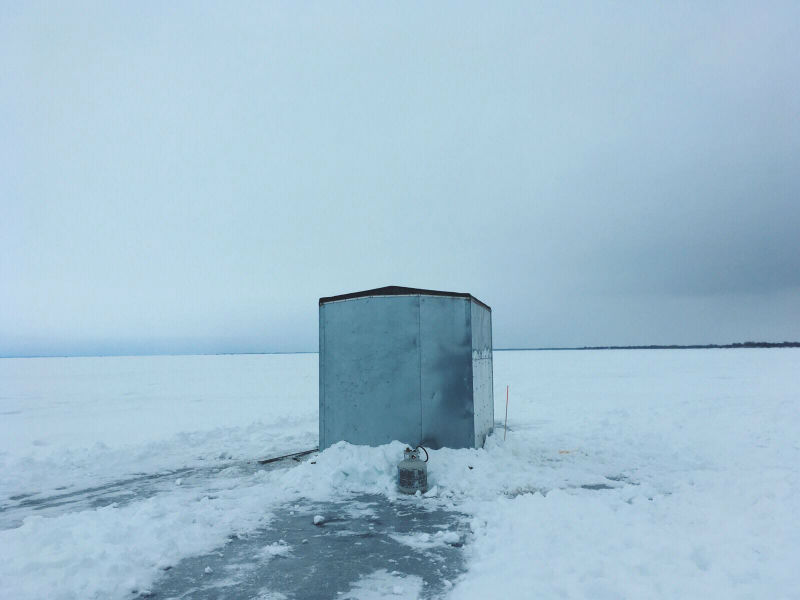
We bring sandwiches, snacks and a thermos or two. I also make sure to bring an extra set of dry, warm clothes, a camera and tripod, flashlight, safety ice picks and shoe creepers.
You also must be sure to have your license and sturgeon tag with some twine or zip ties to attach the validated tag to the fish should you harvest one. The tag does not need to be attached to the sturgeon unless the license holder leaves the fish, though.
Driving on ice
This year we chose the second weekend of the season to spear. Each day (Saturday, Sunday and Monday), Cheyenne and I would get up at 3:30 a.m. to get ready to walk out the door at 4:15. It took us about an hour and 15 minutes to drive to Paul's house, which was a little north of Fond du Lac.
From there we'd caravan about 10 miles north to Oshkosh, where we'd head out onto Lake Winnebago. We drove almost 4 miles out on the lake in the predawn darkness.
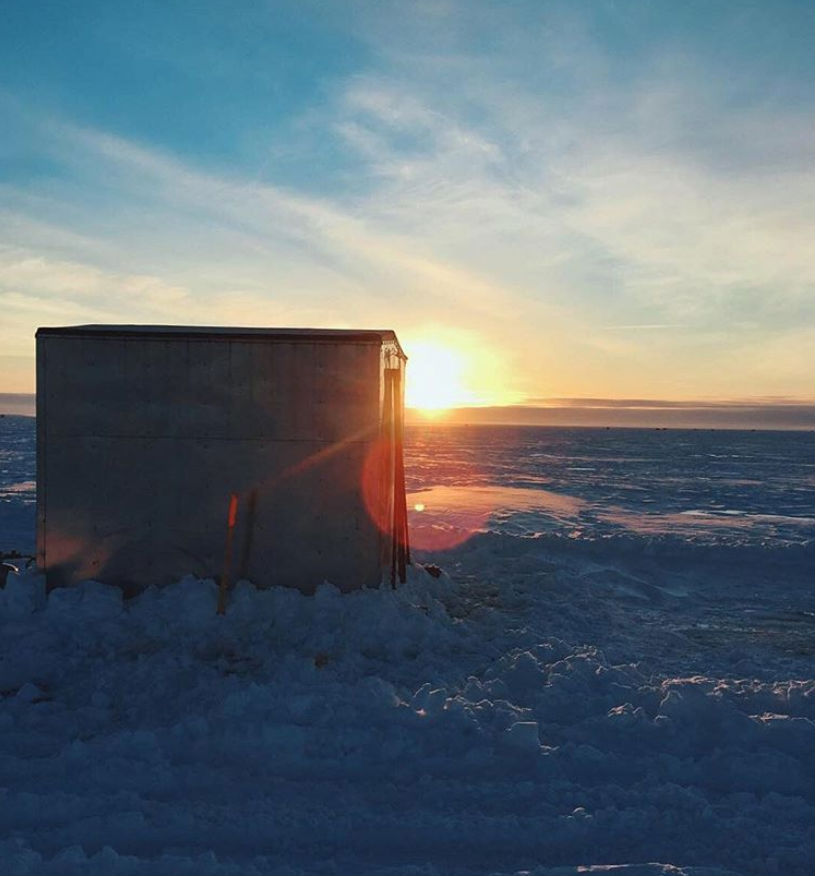
It was always cool to see the lights from other vehicles driving on the ice, and to hear the car tires crunching over the snow. If you've never driven on a frozen lake it's something to remember. It reminds me of trekking through snow to a deer stand in the early morning. It's peaceful but also loaded with anticipation.
There's a sense of caution and even trepidation as you hear the sounds of the ice and snow, knowing that below you lies 20 feet of murky water. This can be particularly disconcerting if you happened to watch any videos of cars or trucks going through holes in the ice the night before!
But once the ice is around 18 inches thick, it's pretty secure. Paul told me that folks who have never been out on the lake don't get it, that they have to experience it to understand how safe it is. The various sturgeon clubs, like Sturgeon for Tomorrow, keep the main ice roads plowed, set up metal bridges over cracks and mark weak spots for drivers to avoid.
When you see hundreds of vehicles and darkhouses congregated on the ice, you realize you have little to worry about if you use your common sense and a few safety rules (like one vehicle at a time when going over the ice bridges).
You're actually in more danger of having an accident driving on the highway getting to the lake than you are of going through the ice in your vehicle. But again, no ice is completely safe, so you need to pay attention and remain alert.
At the ice shack
We'd invariably arrive at our ice shanty just as the sun began to peak over the horizon. It made for a starkly beautiful sight, seeing the colors of the early morning sky and sun rising over the flat expanse of windswept snow and ice. It was quite peaceful, with only the occasional distant sound of a chainsaw cutting a new ice hole or the disturbing sound of ice popping and cracking.
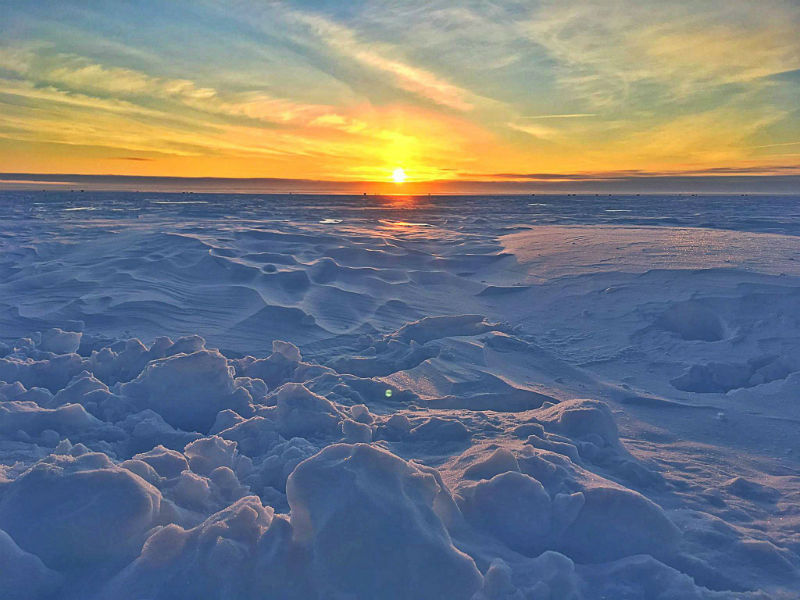
After, Paul would turn the heat on in the shack, clear the ice from the hole that formed overnight and wish us luck.
"Make it happen today!" he'd say.
Cheyenne and I would settle in for the long watch, hoping it wouldn't actually be too long.
Once the propane stove was lit, the shack was surprisingly warm, even too hot at times. We'd tense up every time we'd hear and feel the ice crack. And we'd talk about all sorts of things and embrace this quiet time that has become our yearly ritual.
We'd eat our sandwiches, take turns catching 15-minute naps and periodically move the decoys to try and attract any passing sturgeon. We'd visualize giant black shadows materializing from the edges of the rectangle we were staring at.
As the morning progressed, the ice hole would become a little brighter and we'd adjust our decoys to the depth of water clarity. There are any number of decoys and attractants that spearers use. We've used brightly colored fish replicas 2 feet long, foil-wrapped toy balls, glittery glass bottles and vases and white porcelain coffee cups.
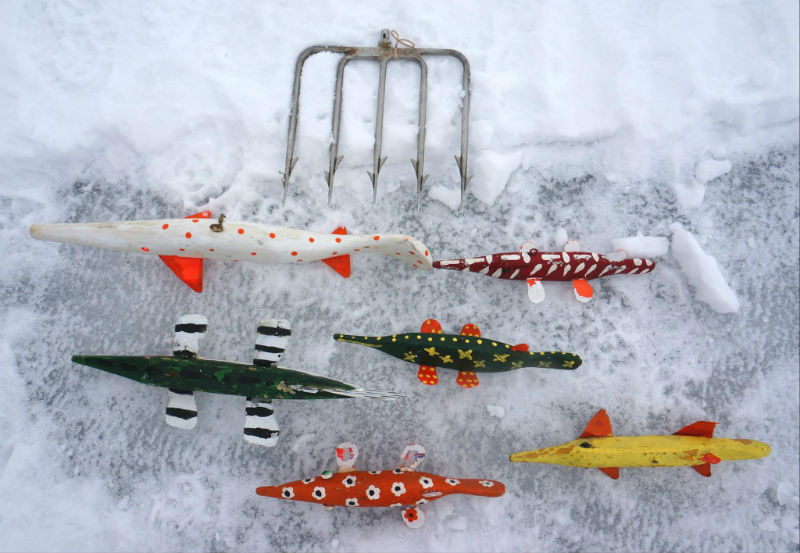
Last year a spearer lured a big sturgeon to his hole using a deer antler. Anything goes, so long as a sturgeon can see it. This year we had about 9 feet of visibility. The water about 8 feet below the decoys was blacked out to us.
Sturgeon are curious critters, and will come in to check out a decoy. One afternoon, Paul told of us one spearer who had a sturgeon come in and bump his decoy. The man "threw" his spear but missed.
That's another thing we learned. You don't actually throw your spear. You thrust it more or less, pushing it at the fish. The spears are very heavy, and if the fish is down far enough, you can position the spear above the sturgeon and almost just release it. Its weight will drive it into the fish. However, I think most folks do in fact give it a good push to make contact.
A miss!
Cheyenne learned this the hard way, when on Saturday at around 11 a.m., a small sturgeon came swimming through the hole. It happened so suddenly that all she could do was yell, "Daddy!," grab the spear and let it go.
But the beast was too close to the surface of the ice. While Cheyenne made contact, the spear didn't penetrate. I think one tine went part-way in. All she came away with was what looked like a little piece of sturgeon skin and disappointment.
Was I excited? That would be putting it mildly. I had a regular case of buck fever! This was the first fish we'd seen in three years of trying. I whooped and hollered, and my heart was pumping like a racehorse. I high-fived and fist-bumped her, and repeated how awesome it was, to the point that I think she wondered if I was quite all right.
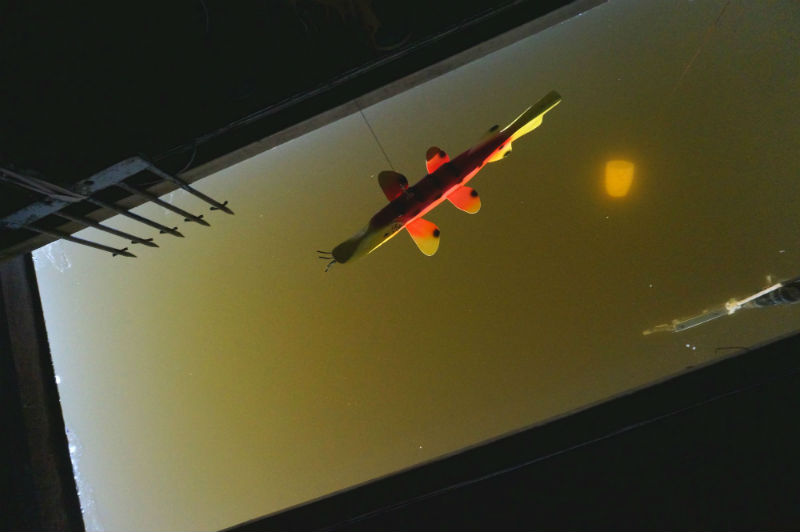
We played the scenario over for the next hour, what we did wrong and how we would do it better the next chance we got. We would push the spear down forcefully next time, rather than simply releasing it, especially if the fish was as high in the water column as this one was.
I will tell you, the experience certainly did heighten our focus for the rest of the day.
Culture and community
The sturgeon spearing season on Lake Winnebago is unlike anything you've experienced. At the end of the day, once you get away from the monotony of sitting in your ice shack, the whole vibe changes.
Anglers get together on the ice or at registration stations for beer and food and to swap tales. It's reminiscent of a Green Bay Packers tailgate party.
We stopped at Wendt's restaurant and registration station on the lake, to see the sturgeon hanging on the trophy board outside. It was chaotic in the best sense of the word. Hundreds of cars were parked on the ice, and even a helicopter landed on the ice while we were there.
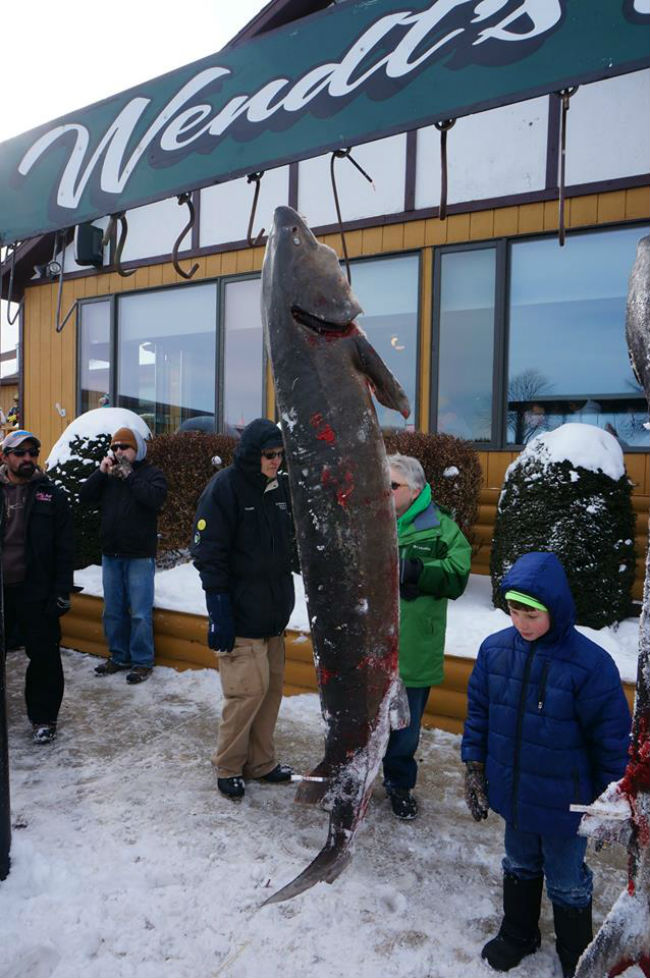
Crowds of people congregated around the registration station and outside the restaurant. Whenever a particularly big fish was weighed and measured, the crowd would erupt in cheers. Food, drink and a festive feeling permeated the air.
It is definitely a celebration. A celebration of both a community of like-minded folks and a wildlife resource.
Wisconsin has done something unique with its lake sturgeon program. The state and the community have brought a once scarce prehistoric fish back to a sustainable and abundant population level. It's an incredible conservation success story, one that looks to only get better every year.
Over the next two days, Cheyenne and I talked about our missed opportunity. And, when Paul came to pick us up at the shanty at the close of Monday, we vowed to be back next year to try it again.
Next year things will be different, though. Next year is going to be the year we make it happen!
Like what you see here? Experience more articles and photographs about the great outdoors at the Facebook page, Stumpjack Outdoors.
NEXT: 2018 STURGEON SPEARING SEASON RESULTS ARE IN
WATCH
